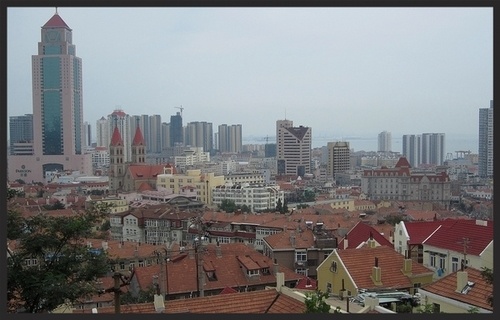My mother has been transcribing a series of my great-grandfather’s letters he wrote while living in China in the early 1920s. Each is an incredible time capsule reminding us of how much has changed in the last century. In one passage, he summarizes the route he will need to take to get back to the US. It gets me thinking about the user experience of transit: how it affects our quality of life and how the design of transit affects our society overall.
December 1921 in Tsingtao, China
“I have not made up my mind yet which way I want to go. Sometimes I cannot get home fast enough, and at other times I want to take my time and go by Suez. It was all Suez for me up to about six months ago, but as the time draws nearer I feel less like staying away from the U.S. for the extra time it would take. If I should go that way it would mean by the fastest boats, thirty-four days from Hong Kong to London.”
If I were to make that trip today, the 34-day boat ride he describes would be replaced by a 12-hour flight. What incredible access we have gained! But what trade-offs have we made in the name of speed and access?
As my great grandfather made the trip from Hong Kong to (eventually) Brooklyn, he experienced a multitude of other sights, smells and people between his two endpoints, but modern routes skip over those interstitial places. How does this change our understanding of a place? Was my grandfather introduced to more nuances and ways of life than I would be, plugged into my in-flight entertainment system? An urban planner friend of mine believes cities in the future will be centered around the airport. I wonder if we lose a sense of context when a sealed plane ride is our entre to a new place.
Cars on the other hand, though they sacrifice some speed, give us control and an ability to break away from the beaten path. You can glimpse the city skyline on the horizon and watch as it grows, enveloping you in its architectural feats. Looking at a few recent trends, cars seem to be less of a mere conduit and more of a state all its own. The opposite of air travel, these trends allow us to dwell perpetually in the interstitial, enjoying the journey more than the destination. Volvo’s tagline for its new wifi feature sums it up nicely: “You can disconnect from home and reconnect with the road.” Audis have their own shipping address, acknowledging that people are more often away from home. Cars have mastered a freedom of exploring.
But as the car experience becomes a more substantial part of our lives, what are we sacrificing? In a way, cars have become too user-centered when we consider how prioritizing the driver negatively impacts the city. Houston and LA are examples of sprawling cities based on roads and parking lots that drive air temperatures up, foster air pollution and do nothing to relieve traffic problems. I watch our own Seaport develop and feel the scales tip away from the pedestrian and towards cars. Each residential tower is marketed as its own world unto itself with all the amenities you need, complete with a built-in garage. This siloed approach discourages residents from walking between buildings, exploring the history of the area and meandering along the waterfront. Can we find a way to serve the traveler without sacrificing the environment and social fabric of a streetscape?
We have an opportunity to consider what design principles we want to use as we reinvest in Boston’s transit system. Speed, contextual understanding, ability to get “off the beaten path,” connecting with nature, social interaction, and safety are some that immediately come to mind. Frustrations with the MBTA is fresh in our minds from this past winter. On May 8th and 9th, the City of Boston is hosting a Visioning Lab to shape the vision for the transportation system of 2030. While we set new goals, put new leadership in place and jostle for Olympics funding, let’s be intentional and design. How does transit shape a citizen? How does it shape society?




